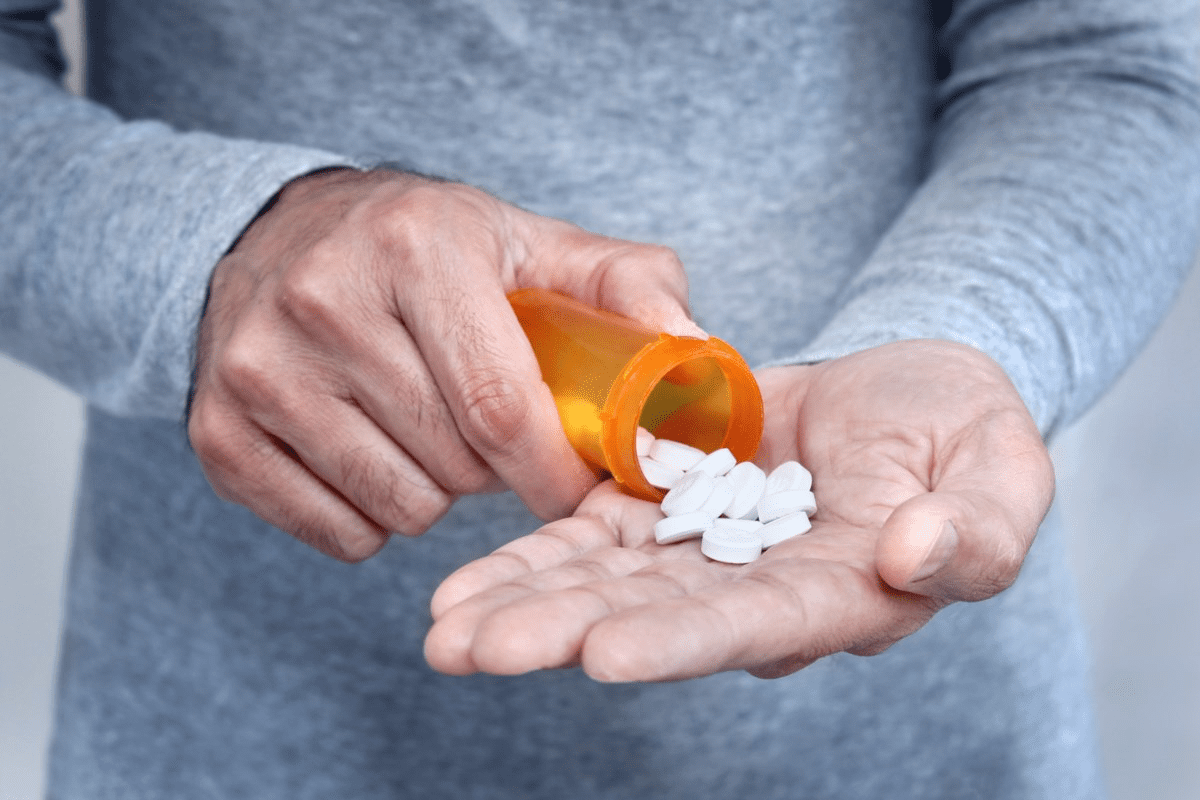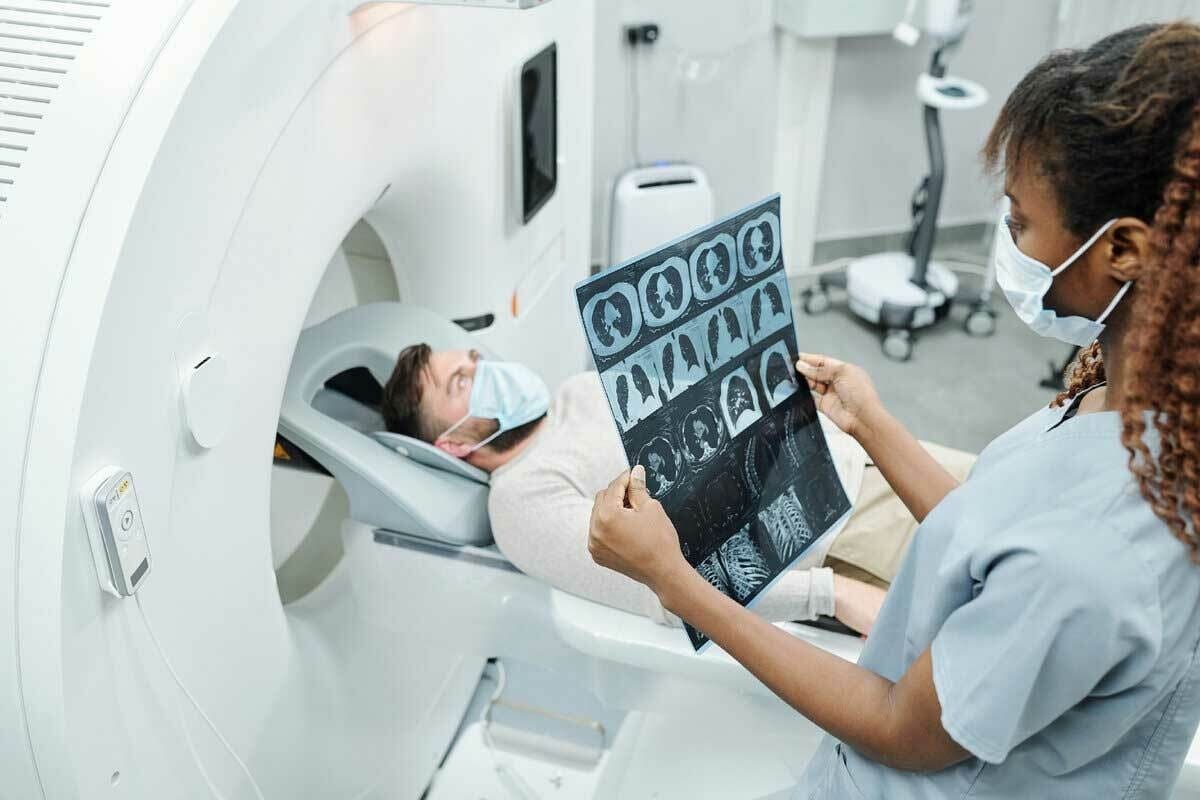Last Updated on November 26, 2025 by Bilal Hasdemir
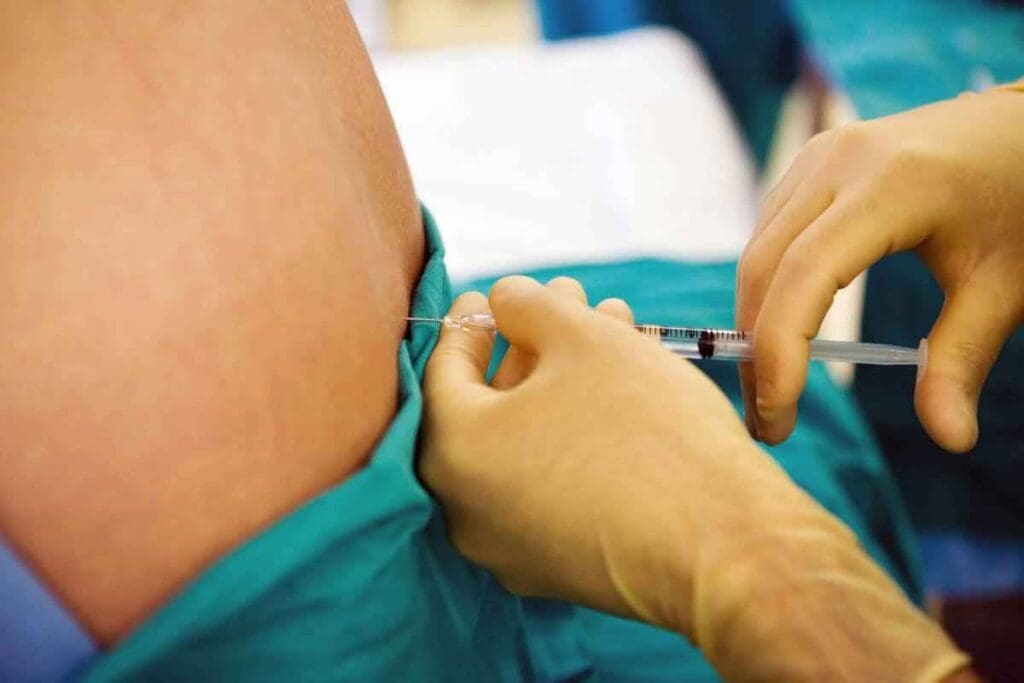
Epidural steroid injections help with back, neck, or nerve pain. This includes pain from herniated discs, spinal stenosis, or sciatica. It’s important to follow the right steps after an epidural injection for a smooth recovery. At Liv Hospital, we stress the need for proper aftercare to avoid complications.
After an epidural steroid injection, you might wonder how to recover well. The steroid in the injection should ease your pain in 1 to 5 days.
Key Takeaways
- Proper rest and care are key after an epidural injection.
- Follow-up care is vital for your treatment and safety.
- You can go back to your daily routine a few days post-procedure.
- Your doctor will tell you when to start your medicines again.
- Use ice or a cold pack if the injection site hurts or feels tender.
Understanding Epidural Steroid Injections
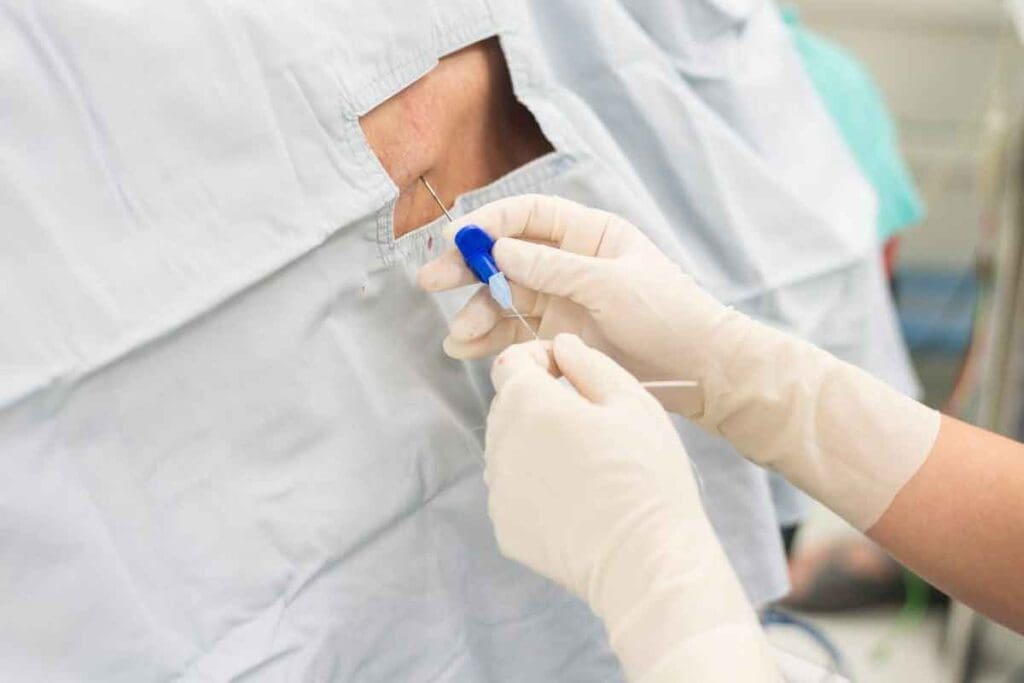
It’s important to know about epidural steroid injections if you’re thinking about them. These injections are a common way to treat chronic pain in the spine. They help with many spinal conditions.
What Is an Epidural Steroid Injection?
An epidural steroid injection puts steroids and anesthetic near the spinal cord. This space is called the epidural space. The goal is to cut down on inflammation and ease pain in the spine.
The steroids in these injections are strong anti-inflammatories. They help reduce swelling and irritation around the spinal nerves. The anesthetic gives quick pain relief. Together, they can help a lot with chronic back pain.
Common Spine Conditions Treated
These injections are for several spinal problems, including:
| Condition | Description |
| Herniated Discs | Discs that bulge or rupture, pressing on spinal nerves. |
| Spinal Stenosis | Narrowing of the spinal canal, causing nerve compression. |
| Degenerative Disc Disease | Wear and tear on spinal discs, leading to pain and inflammation. |
| Spondylolisthesis | A condition where a vertebra slips out of place, irritating nerves. |
What to Expect During the Procedure
The epidural steroid injection process is usually quick and simple. It happens in a clean place, like a hospital or clinic.
Key Steps:
- Preparation: Patients lie on their stomach or side, and the area is cleaned and prepared.
- Guidance: A special X-ray helps the doctor find the right spot for the injection.
- Injection: The mix of steroids and anesthetic is put into the epidural space.
Most people don’t feel much pain during the procedure. Relief usually starts a few days later. Knowing what to expect can make you feel more at ease and ready for the next steps in your treatment.
Immediate Post-Procedure Care
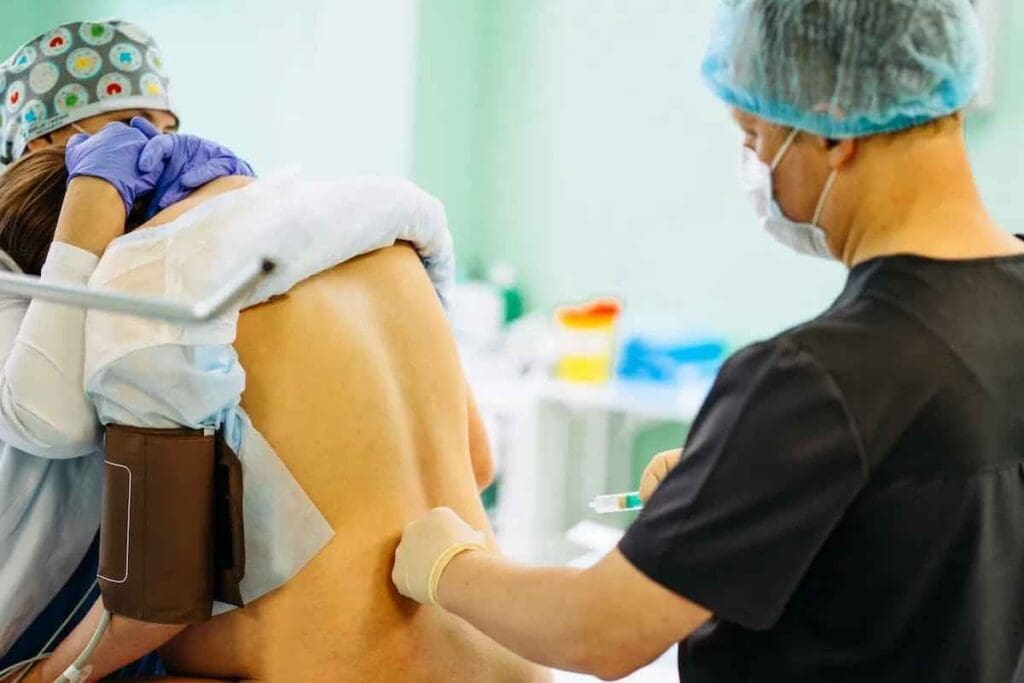
Proper care after an epidural injection is key to a smooth recovery. The time right after treatment is critical. It’s important to follow the right care instructions.
Recovery Room Monitoring
You’ll spend a short time in a recovery area after the procedure. Most people are monitored for 15–30 minutes. This ensures there’s no immediate reaction to the medication.
During this time, our medical staff will check your vital signs. They also watch for any signs of an adverse reaction.
Transportation Requirements
It’s vital to arrange for someone to drive you home after the procedure. The sedation and the injection may make it unsafe to drive. We advise against driving yourself or operating heavy machinery for the rest of the day.
First Few Hours After Injection
In the first few hours, you may feel numbness or weakness in your legs. Resting and avoiding strenuous activities is important. If you have severe pain, numbness, or tingling, contact your healthcare provider right away.
To ease discomfort, apply ice to the injection site for 15-20 minutes at a time. But, use a cloth or towel between the ice and your skin to avoid direct contact.
By following these guidelines, you can ensure a smooth recovery after your epidural steroid injection.
What to Do After Epidural Injection: Rest Requirements
Knowing how much rest you need after an epidural injection is key to its success. It’s vital to let your body heal properly after getting an epidural steroid injection.
Take it easy for at least 24 hours after the procedure. You don’t have to stay in bed all day. Just avoid hard work like heavy lifting, bending, or twisting.
The 24-Hour Rest Period
The first 24 hours are very important for your recovery. Try to avoid activities that could make your condition worse or slow down healing.
“Rest is not idleness, and to lie sometimes on the grass under trees on a summer’s day, this is one of the pleasures of life.” – William Henry Davies
This quote shows the value of rest. But, it’s also important to follow specific rules after an epidural injection. Don’t drive, use heavy machinery, or do anything that needs your full attention.
| Activity | Recommended Action During 24-Hour Rest Period |
| Driving | Avoid |
| Heavy Lifting | Avoid |
| Bending or Twisting | Avoid |
| Strenuous Exercise | Avoid |
| Light Stretching | Allowed, if comfortable |
Creating a Comfortable Recovery Space
To rest well, make a cozy recovery area. This should be a quiet, comfy spot where you can relax without distractions.
Tips for a Comfortable Recovery Space:
- Keep your phone nearby for emergencies.
- Have a water bottle and snacks within reach.
- Adjust the lighting to a comfortable level.
- Use pillows and blankets to support your body.
Balancing Rest and Gentle Movement
Rest is key, but gentle movement is also important. After 24 hours, start with light activities to avoid stiffness and help healing.
Gentle Movement Tips:
- Start with short walks around your home.
- Gradually increase your activity level based on comfort.
- Avoid heavy lifting or bending.
By following these tips, you can have a smooth recovery after your epidural steroid injection. Our team is here to support you every step of the way.
Injection Site Care and Management
Proper care of the injection site is key for a smooth recovery after an epidural steroid injection. We suggest a few simple steps to help the site heal well and avoid complications.
Keeping the Area Clean and Dry
It’s important to keep the injection site clean and dry to prevent infection. Gently wash the area with mild soap and water, then dry it. For the first 24 hours, avoid getting the site wet (like taking a bath or swimming).
Applying an ice pack to the site can help with swelling or discomfort. Use a cloth to cover the ice pack and apply it for 15-20 minutes, with breaks in between.
Bandage Care and Removal
The bandage should stay dry and in place for at least 24 hours. If it gets wet or dirty, replace it with a new, clean one. After 24 hours, you can remove the bandage and keep the area clean.
Normal vs. Abnormal Injection Site Reactions
Some mild reactions at the injection site are normal, like slight redness or swelling. But, certain symptoms could mean a complication. Here’s a table to help you tell the difference:
| Reaction Type | Normal Reactions | Abnormal Reactions |
| Redness/Swelling | Mild, localized | Severe, spreading |
| Pain | Mild discomfort | Severe or increasing pain |
| Discharge | None or slight clear discharge | Pus or thick discharge |
If you see any abnormal reactions or signs of infection, like more redness, swelling, or discharge, call your healthcare provider right away.
By following these care guidelines, you can help ensure a smooth and complication-free recovery after your epidural steroid injection.
Driving and Transportation Restrictions
Knowing the rules about driving and travel after an epidural injection is key for a safe recovery. After getting an epidural steroid injection, many patients wonder if they can drive or travel.
Why Driving Is Not Recommended
Driving right after an epidural steroid injection is not a good idea. This is because the shot can make you feel numb, weak, or slow to react. These effects can make it unsafe to drive.
Key reasons to avoid driving include:
- Potential numbness or weakness in the legs
- Impaired reaction times
- Possible drowsiness from sedatives used during the procedure
When You Can Safely Drive Again
When you can start driving again depends on how you react to the injection and the medicine used. Usually, doctors say wait until:
| Criteria | Description |
| Numbness or weakness subsides | Ensure that any numbness or weakness in the legs has resolved |
| Reaction times normalize | Wait until you can react quickly and safely to driving conditions |
| Drowsiness dissipates | Avoid driving if you feel drowsy from sedatives or other medications |
Planning Alternative Transportation
It’s smart to have someone drive you home after the procedure. They should help with getting around for a day or two. If you can’t find a ride, think about:
- Hiring a professional driver or transportation service
- Using public transportation, if feasible
- Asking your healthcare provider for recommendations on local transportation options
By following these tips, you can make sure your recovery is safe and easy after your epidural steroid injection.
Optimal Sleeping Positions After Your Injection
Sleeping well after an epidural steroid injection is key to recovery. It’s important to sleep in a way that keeps your spine straight. This helps reduce pain and aids in healing.
Best Position to Sleep After Epidural Steroid Injection
The best sleeping positions are on your side or back. These keep your spine in its natural position. Sleeping on your stomach is not advised as it can cause your spine to curve, leading to pain.
When on your side, a pillow between your knees helps keep your hips and lower back aligned. For back sleepers, a pillow under your knees supports the natural spine curve.
Recommended Pillows and Supports
The right pillows and supports can greatly improve your sleep. A supportive mattress is essential. Additional pillows help keep your spine aligned.
- A contoured pillow supports your neck and keeps your spine straight.
- A pillow between your knees helps keep your hips aligned when sleeping on your side.
- A lumbar support pillow adds comfort for back sleepers.
Adjusting Your Sleep Environment
Improving your sleep environment can also help your recovery. Make sure your bedroom is cool, dark, and quiet for better sleep. Use blackout curtains, a white noise machine, or earplugs if needed.
| Sleep Environment Adjustment | Benefit |
| Cool Room Temperature | Promotes better sleep quality |
| Darkness | Enhances melatonin production |
| Quiet Environment | Reduces sleep disturbances |
By choosing the right sleeping position, using the right supports, and adjusting your sleep space, you can greatly improve your comfort and recovery after an epidural steroid injection.
Managing Common Side Effects
Managing side effects is key to a smooth recovery after an epidural steroid injection. These injections are usually safe, but some people might face temporary side effects. It’s important to handle them properly.
Temporary Numbness and Tingling
Temporary numbness or tingling in the affected area is a common side effect. This happens because of the numbing medication used during the procedure or the steroid itself.
- Duration: This numbness or tingling usually goes away within a few hours to a few days.
- Management: Patients should move gently and avoid hard activities to manage these feelings.
Dealing With Post-Injection Discomfort
Some people might feel discomfort or pain at the injection site after the procedure. This pain is usually mild and short-lived.
To manage post-injection discomfort:
- Apply ice packs to the affected area to reduce swelling and ease pain.
- Use over-the-counter pain medications as directed by your healthcare provider.
- Rest and avoid heavy lifting or bending.
Steroid-Related Effects
Epidural steroid injections can sometimes cause effects like facial flushing, insomnia, or increased appetite. These effects are usually mild and temporary. They go away once the steroid is fully absorbed by the body.
Key Points to Remember:
- Steroid-related effects are usually mild and temporary.
- Staying hydrated and maintaining a balanced diet can help manage some of these effects.
- If these effects persist or cause significant discomfort, consult your healthcare provider for guidance.
By understanding and managing these common side effects, patients can have a more comfortable recovery after an epidural steroid injection. Always follow the specific instructions provided by your healthcare provider for the best outcomes.
Returning to Physical Activities and Exercise
Knowing when to start exercising again after an epidural steroid injection is important. It’s tempting to get back to your usual activities quickly. But, it’s key to do it slowly and with your doctor’s advice.
Timeline for Activity Resumption
The time it takes to start exercising again varies. It depends on your health and your doctor’s instructions. Usually, you should avoid hard activities for 24 to 48 hours after the shot. Always follow your doctor’s advice on when to start different activities.
Low-Impact Activities to Begin With
When you’re ready to start moving more, start with easy activities like walking or stretching. These keep you flexible and strong without hurting your back. Talk to your doctor or a physical therapist to make a safe exercise plan for you.
When You Can Resume Golf and Similar Sports
For sports like golf, which need twisting and bending, wait at least a week or until your doctor says it’s okay. When you start golf or similar sports again, do it slowly. Listen to your body. If you feel pain or discomfort, stop and talk to your doctor.
Exercise Modifications to Protect Your Spine
When you start exercising again, make changes to protect your spine. Avoid heavy lifting, bending, or twisting. Instead, do exercises that strengthen your core and improve flexibility. Core strengthening exercises are great for supporting your spine and preventing injuries.
By slowly getting back to exercise and making safe choices, you help your recovery. This can also lower the chance of future spine problems. Always check with your healthcare provider before changing your exercise routine a lot.
Pain Management Strategies
Pain management is key after an epidural steroid injection. It helps you feel better and get back to your daily life. Using the right strategies can make a big difference.
Appropriate Use of Ice and Heat
Ice packs can reduce swelling and ease pain. Use them for 24 to 48 hours after the injection. Then, switch to heat to relax muscles and improve blood flow.
Ice and Heat Application Guidelines:
| Therapy Type | Duration | Frequency |
| Ice | 15-20 minutes | Every 2-3 hours |
| Heat | 15-20 minutes | Every 2-3 hours |
Medication Guidelines
Your doctor might give you pain relievers or anti-inflammatory meds. It’s important to take them as directed. If you have any side effects, tell your doctor right away.
Medication Management Tips:
- Take medications as directed by your healthcare provider.
- Be aware of any side effects and report them promptly.
- Do not exceed the recommended dosage.
Non-Pharmaceutical Pain Relief Methods
There are other ways to manage pain too. Gentle stretching, deep breathing, and resting comfortably can help. These methods can work well with medication and ice/heat therapy.
Non-Pharmaceutical Pain Relief Techniques:
- Gentle stretching exercises.
- Relaxation techniques like deep breathing or meditation.
- Maintaining proper rest and sleep positions.
Using these strategies together can help you recover faster. It makes the treatment more effective and reduces pain.
Warning Signs and When to Seek Medical Help
After getting an epidural steroid injection, it’s important to watch how your body reacts. Knowing the warning signs that mean you need to see a doctor is key. Even though these injections are usually safe, keeping an eye on your health is vital for a good recovery.
Signs of Infection at the Injection Site
One big warning sign is infection at the injection site. Look out for:
- Redness or swelling around the injection site
- Increased warmth or tenderness to the touch
- Pus or discharge from the injection site
- Fever or chills
If you see any of these, get medical help right away. Infections can be serious and might need antibiotics.
Severe or Worsening Pain
Some pain after the injection is normal. But if the pain gets worse or feels different, call your doctor. This could mean there’s a problem or the injection didn’t work as hoped.
Neurological Symptoms Requiring Immediate Care
Some neurological symptoms after the injection need quick medical help. Watch for:
- Numbness, tingling, or weakness in your legs or arms that persists or worsens
- Difficulty controlling your bladder or bowels
- Severe headache or dizziness
These signs could mean nerve damage or other serious issues. If you notice any, get medical help right away.
Rare but Serious Complications
Even though rare, serious problems can happen after the injection. These include:
- Spinal cord injury or stroke
- Allergic reactions to the steroid or other medications used
- Infection in the spinal canal (epidural abscess)
Knowing about these risks and their warning signs can help you get the care you need fast.
In summary, while epidural steroid injections help many, knowing the warning signs is key for your safety and recovery. If you’re worried about your symptoms or have questions, talk to your healthcare provider.
Conclusion: Ensuring Successful Recovery and Long-Term Relief
Following the right aftercare steps is key to getting the most out of an epidural steroid injection. It helps improve your life quality. A good recovery is essential for lasting relief.
We’ve shared important steps to take after the procedure. This includes immediate care, managing side effects, and getting back to activities. It’s also important to watch for complications and seek help if needed.
For a successful recovery, plan carefully and follow the instructions given. Knowing what to expect during recovery helps. This way, patients can fully benefit from their epidural steroid injection and enjoy lasting relief.
FAQ
What should I do immediately after an epidural injection?
Rest for at least 24 hours after an epidural injection. Make sure someone drives you home. Driving is not safe right after the procedure.
Can I drive after a steroid injection in my back?
No, don’t drive yourself home after an epidural steroid injection. The sedatives can make it hard to drive safely.
How long should I rest after an epidural steroid injection?
Rest for 24 hours after the injection. This helps your body heal and lowers the risk of problems.
What is the best position to sleep after an epidural steroid injection?
Sleep on your back with a pillow under your knees or on your side with a pillow between your knees. This keeps your spine in its natural curve and eases discomfort.
How soon can I exercise after an epidural steroid injection?
Avoid hard activities for 24 to 48 hours after the injection. Then, start with gentle exercises. Always listen to your doctor’s advice.
Can I play golf after an epidural steroid injection?
Avoid golf or hard activities for a few days to a week. The exact time depends on your recovery and doctor’s advice.
What are the common side effects of an epidural steroid injection?
You might feel numbness, tingling, or discomfort after the injection. Some people get facial flushing or trouble sleeping due to the steroids.
How do I manage pain after an epidural steroid injection?
Use ice and heat as needed, follow your doctor’s medication advice, and try gentle stretching or relaxation to manage pain.
What are the signs of infection after an epidural steroid injection?
Look out for increased redness, swelling, or warmth at the injection site, fever, or pus. Seek medical help if you see these signs.
When should I seek medical help after an epidural steroid injection?
Get medical help for severe pain, numbness or weakness in your legs, or signs of infection. Also, seek help for serious complications like severe headache or trouble with your bladder or bowels.
How long does it take to recover from an epidural steroid injection?
Recovery time varies, but most people can get back to normal in a few days to a week. Always follow your doctor’s advice on recovery.
What should I do if I experience severe pain after an epidural steroid injection?
If pain gets worse, contact your healthcare provider. They can suggest ways to manage the pain or check if you need more help.
References
- Chou, R., & Huffman, L. H. (2007). Nonpharmacologic therapies for acute and chronic low back pain: A review of the evidence for an American Pain Society clinical practice guideline. Annals of Internal Medicine, 147(7), 492-504. Retrieved from https://www.ncbi.nlm.nih.gov/books/NBK470189/



